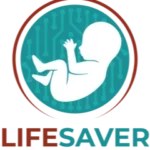FLAG-ERA JTC2021 call – Human Brain Project
Microfluidics in your Human Brain Project
- Modeling the human nervous system using organ-on-chip
- Developing novel psychoactive substances on lab-on-chip devices
- Implementing deep learning and artificial intelligence to control experiments

What microfluidics can do for the JTC2021 ACTION?
Understanding human brain function can give profound insights into what makes us human and is indispensable for developing new treatments for brain disorders. The current JTC2021 action supports projects in synergy with the FET Flagship Human Brain Project.
The targeted research and innovation areas are:
- Studying genotype-phenotype relationships related to Brain Function
- Tackling Psychiatric Diseases
- Accelerating the diagnosis and the development of therapeutic approaches for rare diseases affecting the nervous system
The main applications for microfluidics in this call are the development of novel therapeutic agents, the modelling of the humans nervous system and the identification of genetic mutations. The nervous system can be modelled in vitro by creating a brain or spinal cord organoid grown in a microfluidic device. A similar project funded under the JPND call is currently ongoing at Elvesys – project Orgtherapy.
To sum up the general advantages of microfluidics:
- Very precise control of the cell microenvironment during microfluidic cell culture, for example to study neurodegenerative diseases
- Very precise dosage of pharmaceutically active compounds, in order to identify novel physoactive substances
- Possibility to parallelize and automate the experiments – important for gene sequencing to identify novel mutations
Cell culture experiments using microfluidics allow staining of different cellular compounds, monitoring of neurotransmitter uptake, co-culture of several cell types and a prolonged culture time with automated medium supply.
What can the MIC do for your JTC2021 project?
The MIC can bring its expertise in microfluidic instrumentation and flow control to help you develop the microfluidic innovation of your research project! We have already participated in more than 30 European projects, to help our partners developing the systems suited to their project.
More specifically, we can:
- Develop user-friendly platforms for the perfusion of your organoid model
- Build innovative instruments for sample injection to analyse novel therapeutic agents
- Design the flow control solution suited for your project
- Automate your system to allow high-throughput experiments and good reproducibility
The MIC already brought its microfluidics expertise into many research projects:
H2020-NMBP-TR-IND-2020

Microfluidic platform to study the interaction of cancer cells with lymphatic tissue
H2020-LC-GD-2020-3

Toxicology assessment of pharmaceutical products on a placenta-on-chip model
